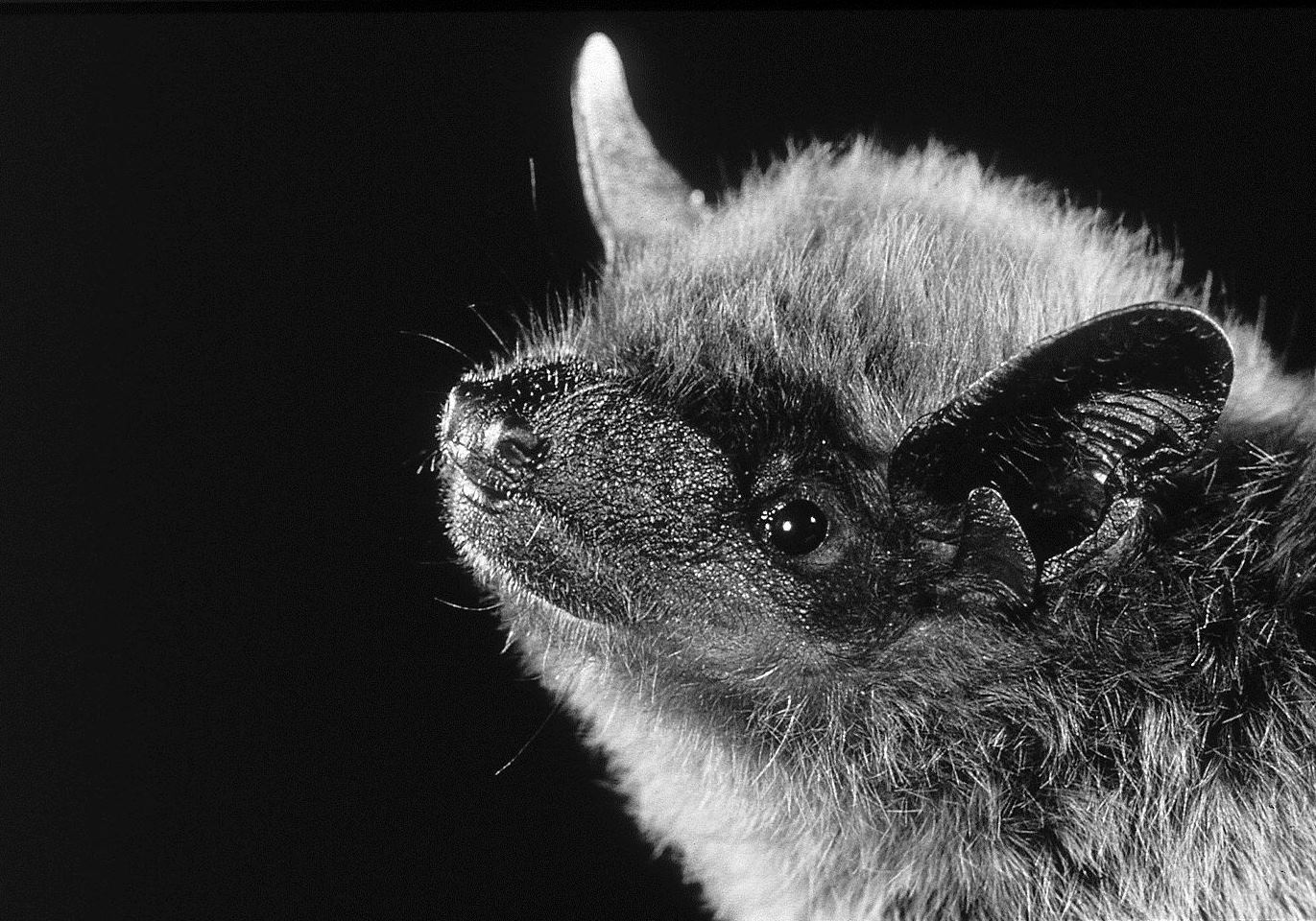EVENING BAT
Nycticeius humeralis (Rafinesque 1818)
Order Chiroptera : Family Vespertilionidae
DESCRIPTION. A small, nearly black or blackish-brown bat; ears small, blackish, thick and leathery; underparts paler. Immature individuals are darker than adults. Dental formula: I 1/3, C 1/1, Pm 1/2, M 3/3 × 2 = 30. Averages for external measurements: total length, 93 mm; tail, 39 mm; foot, 8.5 mm; forearm, 36 mm. Weight, 5–7 g.

DISTRIBUTION. This species occurs throughout most of the eastern United States, west to Nebraska, and southward into northeastern Mexico. In Texas it has been documented in the eastern one-third of the state west to Tom Greene and Val Verde counties on the edge of the Hill Country. The Tom Green and Val Verde county records are recent, as are records from Midland and Presidio counties, along with Texas Department of State Health Services reports of the bat from Bailey and Yoakum counties along the Texas–New Mexico border. All of these recent reports suggest a westward expansion of the range of this species, similar to what also has presumably occurred in Nebraska and Kansas.

SUBSPECIES. Nycticeius h. humeralis.
HABITS. These bats frequent forested areas and watercourses and utilize hollow trees as roosting sites and nurseries. They use the attics of houses and other human structures as roosts when natural sites are not available. They have been captured in all months of the year in Texas, indicating that they are year-round residents of the state. Their winter habits are not known. In summer the adult males and females do not use the same roosts.
Evening bats seem to have two preferred times of foraging, one in the early evening hours and then again just before dawn. Specific prey items include small night-flying insects such as true bugs, flying ants, spittlebugs, June beetles, pomace flies, Japanese beetles, and moths.
Copulation takes place in the fall, but it is not known where this occurs. One to three offspring are born to each female, with an average of two. Young are typically born from late May to mid-June. Nursery colonies may contain several hundred individuals, and at this time the colonies are usually segregated by sex, with adult males rarely encountered in the nursery colonies. The young ones, at least on occasion, accompany their mother, attached to her breast. The young bats are volant at approximately 20 days of age and are nearly adult size by 1 month of age.
POPULATION STATUS. Common, year-round resident. The evening bat is common east of the 100th meridian in Texas and apparently has begun a gradual expansion west of that line. It is a year-round resident, roosting in hollow trees and in attics of buildings, and has probably been served well by human development.
CONSERVATION STATUS. The IUCN status of the evening bat is least concern, and it does not appear on the federal or state lists of concerned species. Populations appear to be stable as long as forested habitat to meet foraging and roosting needs is available.
From The Mammals of Texas, Seventh Edition by David J. Schmidly and Robert D. Bradley, copyright © 1994, 2004, 2016. Courtesy of the University of Texas Press.
Natural Science Research Laboratory
-
Address
Museum of Texas Tech University, 3301 4th street, Lubbock, TX 79409 -
Phone
806.742.2486 -
Email
nsrl.museum@ttu.edu

